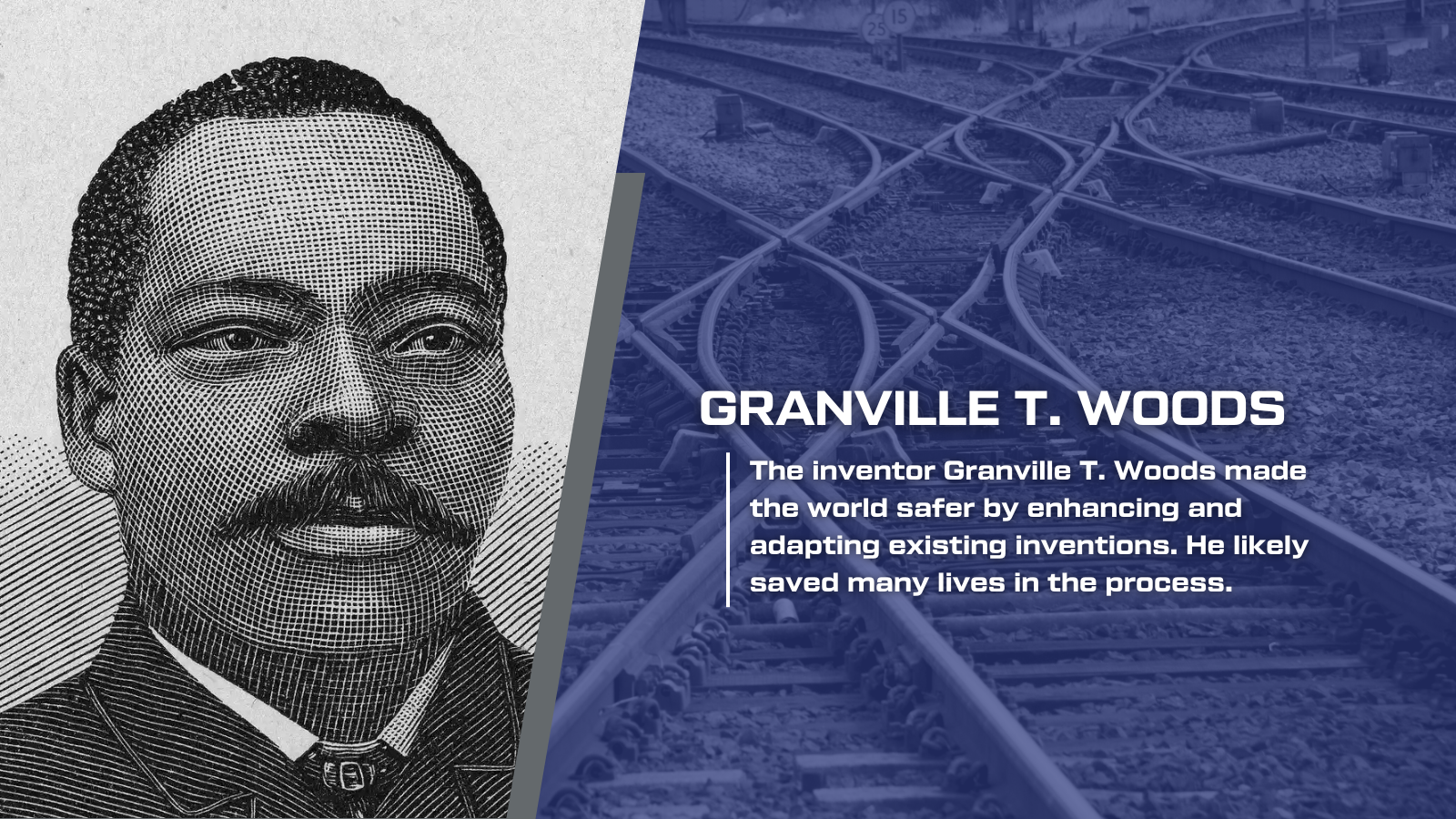Some inventions turn the world upside down: The printing press, the steam engine, the smartphone. It’s easy to see how these innovations changed the course of our culture.
Other inventions get less attention, but their impact on the world can be just as powerful. In fact, they can save lives.
For example, the inventor Granville T. Woods made the world safer by enhancing and adapting existing inventions. He likely saved many lives in the process. This Black History Month we’re celebrating Woods’ career by highlighting two of his innovations.
The Multiplex Telegraph Device
Woods was born in 1856, nearly a decade before the Civil War and Emancipation ended slavery in the United States. Though never enslaved himself, he came of age as segregation and racial inequality tightened their grip on the nation.
Woods’ family couldn’t afford formal education, so Woods educated himself by working in steel mills and on steamships. As a young adult, he returned to his native Ohio to work for the railroad that connected Dayton with the rural towns of southeastern Ohio, along what is now U.S. 35.
Woods’ railroad work likely inspired the first invention we’d like to highlight, his Multiplex Telegraph Device.
The Multiplex Telegraph allowed moving trains to communicate with train dispatchers by tapping into the telegraph lines that already ran beside train tracks. The device used static electricity from the train to generate a magnetic field.
This was a huge step for transportation safety. Before Woods’ invention, trains could communicate with dispatchers only when someone on board could see the station’s signs and flags. The Multiplex Telegraph likely prevented collisions by allowing stations and train conductors to communicate while in transit.
We say “likely” because nobody kept statistics on collisions that didn’t happen and passengers who didn’’ die. Like we said above, innovations like Woods’ tended to unfold in the background where they were often invisible to the passengers they helped.
The Power Pickup Device
Later in his career, after opening a machine shop in New York City, Woods helped make mass transit in urban centers safer. Most urban streetcars and commuter trains in the late 19th century drew power from cables strung above rail lines.
After the Blizzard of 1888 wreaked havoc on above-ground power cables, New York City transit leaders wanted to create track-level power supply using what we now call a “third rail.”
Woods’ Power Pickup Device, installed on the bottom of train engines to create contact between the train and the power supply, helped advance third rail technology, making track-level power a standard power distribution method.
Track-level power was easier to run through tunnels, so third rail technology was essential to the development of New York City’s subway system which opened in 1904 and continues to use third rail power today. Ultimately, Woods’ Power Pickup Device helped make transit safer by helping the city separate pedestrians from commuter trains in most parts of the city.
The Power Pickup Device and Multiplex Telegraph Device were among almost 60 patents Woods registered before his death in 1910.
Through his work, Woods changed society’s expectations about safety. Most of us travel differently in the 21st century, but at InfraStripe, we’re still pursuing the same goal: making travel safer by changing our culture’s expectations.
